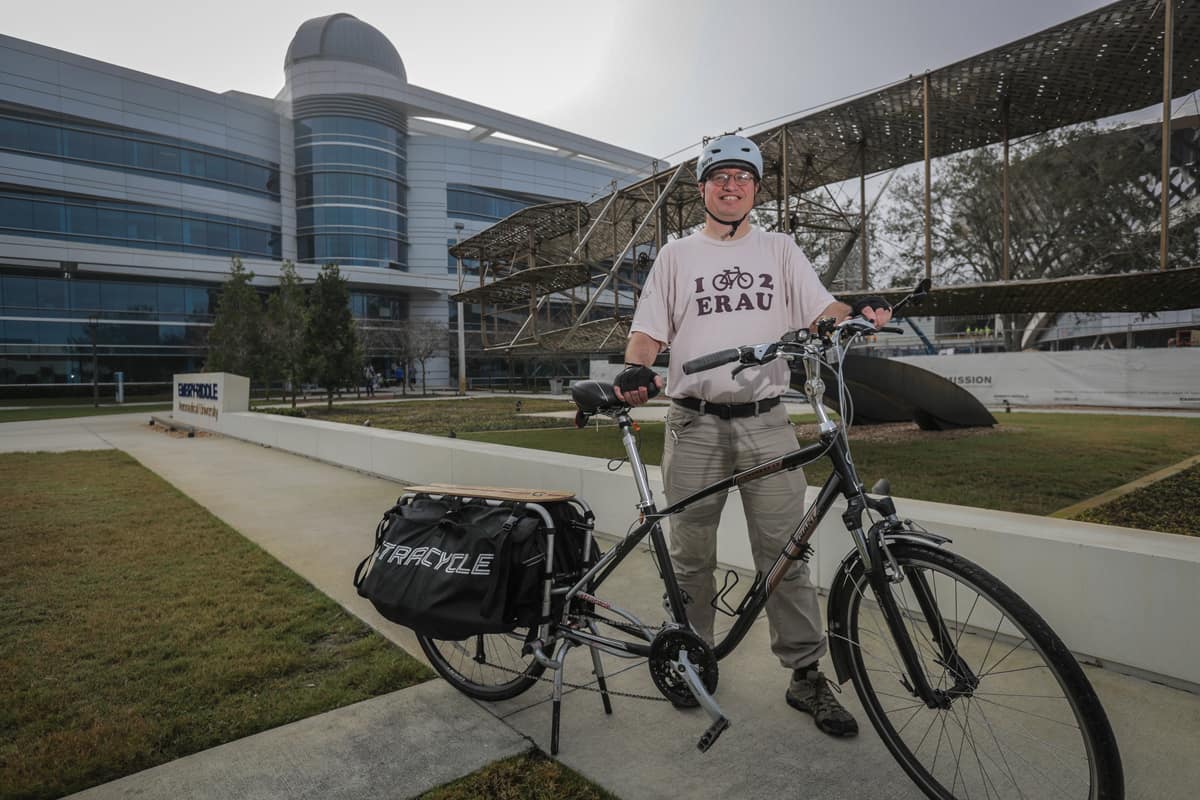Embry-Riddle Biking Group Established to Protect the Planet, Wallets, Health

Since 2018, Embry-Riddle Aeronautical University professor Jason Aufdenberg has prevented more than 3,000 pounds of carbon dioxide from entering the Earth’s atmosphere by biking, rather than driving, for transportation. In that same time, car cost estimates suggest he has saved himself about $50,000 by depending on his bike to get around, and, according to scientific studies of the health benefits of cycling, has lowered his risk of developing cardiovascular illness, Type 2 diabetes and metabolic illness, among other dangerous health conditions.
“While driving a car costs society $0.13 per mile, cycling benefits society $0.56 per mile,” said Aufdenberg, adding that another thing he loves about cycling is, “the fresh air and feeling energized when I arrive at work.”
Aufdenberg, associate professor and undergraduate program coordinator in Astronomy and Astrophysics, is the creator of a free app featuring low-stress biking routes to and from Embry-Riddle. In the past month, he has also launched an Embry-Riddle riders group on lovetoride.net, where members can easily log their miles, estimate their emission offsets, participate in biking challenges, get all kinds of information about cycling, post photos and even win cash prizes.
Third-year Ph.D. student in Engineering Physics Nathan Graves is a huge fan of the app, which is regularly updated.
“It’s a great resource,” Graves said. “It was key in planning my route from where I live to the Embry-Riddle campus. The map is great because it covers a wide area, details types of bike infrastructure and shows bicycle parking.”
The area the map covers is from Interstate Highway 95 to the ocean, and from Granada Blvd. in the north to Dunlawton Blvd. in the south. The “low-stress” biking routes are streets with little traffic, paved trails, bike lines, paved shoulders, grassy or sandy paths and sidewalk connections. Once users have downloaded the map, they can access their real-time location using only a GPS signal, meaning that no WiFi or data plan is required for navigation.
Graves says he bikes for fun, to get exercise and to save gas and miles on his car. He said that while it takes him 40-45 minutes to bike to campus, versus an average of 20 minutes driving, parking for bikes is easier to find on campus and spots are closer to campus buildings, “which makes up for the slower transit time.”
Aufdenberg also participates in a number of biking advocacy efforts and distributes free bike lights each year.
He points out that not owning a car saves an estimated $11,000 a year in total costs if you drive about 15,000 miles annually.
“For students who forgo car ownership for four years, that's up to $44,000,” Aufdenberg said.

 Michaela Jarvis
Michaela Jarvis